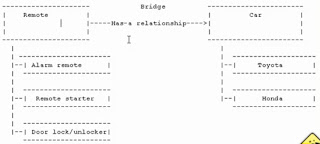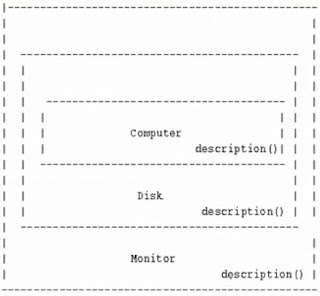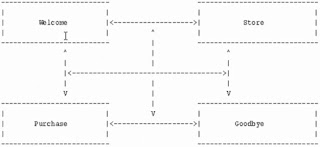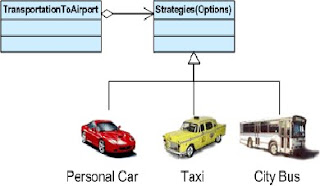II nd Semester - Excitement ContinuesAfter a short vacation I was back to Kochi. Before going home we had vacated our house near the highway. So, when back; once again I was homeless and so I went directly to the hostel (again to Prabhakar's and Vedula's room in Siberia). Sinha by this time had got his room allotment in the hostel and he shifted there. But Chawla joined us for the house hunt and we were again 5 in count.
Soon we found a new house near Payapilly. It was a 3BHK house and we shared one room and hall with one mid-aged man (mostly he was never seen in the house). There were lots of coconut tress in the house campus. The very first day when we booked and paid advance for the house, we broke a coconut and were scolded badly by the landlady.
Now once again we were out of hostels, I shared one room with Chettri and Junnu whereas manoj and chawla were in the other room. Life was once again the same- freaking out, getting food from Nepalis and enjoying at home. Except one thing changed (and it was because of Chawla) and that was cards, playing cards; every night we played cards till late hours. Also our attendance in class deteriorated by more than 50%.
Every night we continued (as we did in 1st sem) going for tea to ATM(all-time-milk) located across the highway. One incident that I remember here is that few night even if it drizzled also, we went for our tea in the rains taking umbrellas. And one such night when we were out for tea, chettri and junnu took their umbrellas as usual. That night it was clear and star studded sky. Manoj and me seeing this started laughing and making fun of them, and forced them to keep their umbrellas back. But as soon as we finished our tea it started to rain heavily. First we waited in the tea shop for more than an hour then in the rain we decided to come back. Junnu and Chettri throughout the way kept shouting at us. Then after that we never forgot our umbrellas (it happens only in Kerala).
Now Girish and Sinha were regular visitors to our new house.
In the class we all became more friendly and free with each other. Few friendships even developed romantic edges. And it was a right time for all of us to plan for a class outing and we decided to go to Munnar for a day. It was my first visit to Munnar. Chawla, Junnu and me from our house went; manoj and chettri decided to stay back as they had already visited this place a few months back. All of us were excited about the outing but it was gals in the class who were most excited, from many weeks back they were deciding over their outfits for the outing day. Trip was rocking. There was dancing/singing throughout the journey. Munnar is awesome.
Forgot to mention here that during these days internal exams came and passed away. Perhaps by now we all became very much used to it.
By second half of 2nd Sem chettri, junnu and manoj also got their allotments in the hostel (Sarovar hostel). I was last in the list for getting the hostel allotment, so for time being I became guest in chettri's room. He shared his room with one of the MSc guy. Rooms in Sarovar were quite spacious.
At this time we (our group) expanded our freaking boundaries to places outside Kochi. After Munnar it was time to go to Kovalam Beach. It was not a class tour. But 11 of us planned to go to Kovalam. This trip was cool. I still have few photographs of this trip, I am pasting two of them here (please let me know, if anyone of you feels these pics objectionable).


Soon it was the time for 2nd sem external exams. At this time Junnu's elder brother marriage date was finalized and we all (our gang) planned to visit his home in Delhi after our exams got over. This train jouney was more exciting with the whole gang there-in, I still remember Sinha saying to a fruit vendor at Bhopal Junction "Chetta naal oranges", perhaps he was used to address people with name Chetta. From Delhi I came back to my home town.
III rd Semester - Ups and DownsThird semester for our batch would be remembered as a sem where there was less time (only it was a 3.5 months long) and lots of studies and exams. In starting of this sem I fell ill and recovered very slowly, this also directly impacted my internal exams. I don't know but perhaps the lowest floor of the Sarovar hostel became very damp during these months and that had caused my ill health and so I decided to move to one of our super-senior (Nitin's Sir) room on the top floor. Thanks sir for your cooperation and patience, I still remember Sir used to go to the basement from the 2nd floor to get drinking water, I never helped him except in drinking and finishing that water. Life on the top floor was good, opposite to my room was manoj and Amit Singh's room. It was the room where big big bakars used to gather ( i was quite regular visitor). Next to my room was jitu's and sushil's room. Whenever I felt like playing cards I used to go here. Here they played cards 24*7. Far at the other end was Junnu's room. So it was a good location to be in.
After doing bad in internals I with some of my supporters started demanding from our HOD for additional internal exams and after some struggle we managed to agree him. I then fared well in these exams. At the end of this sem our external exams dates were once again extended from Dec end to Jan 1st week.
After this sem I once again went to Delhi because my mother was there then. But this time in the train journey was manoj, jitu, sushil, chawla, so all the way we went drinking day & night(my first experience drinking on train).
From Delhi I went to my home town and then was back to CUSAT. Whenever I used to go Delhi from Kochi on Mangla express and then to my hometown (in Jharkhand), I used make a complete round route of India i.e., from Kochi in the south to Mumbai in the west to Delhi in the north and Jharkhand in the east and again back to kochi in the south.
IV th Semester - RejuvenatedThe start of this semester was good for me as I got room allotment in the Sarovar hostel (at last). Chettri changed his room and became my room-mate. Health wise also I was fine. Cream on the cake was that I bought a new PC (40Gb HDD, 128 MB RAM, Intel 3 processor).
We (chettri and me) decided to now do a lot of coding and studies, these days I wrote my first ever C and java programs (both of which failed when executing). Also I joined Siju Sir's java tuition classes. He was a very gentle and nice person. Very soon all those enthusiasm were gone and the computer became a source of entertainment media only. I soon got into race of storing lots of games, audios and videos into my PC.
Soon tuition class also became another cool place to hang around, but however I was able to gain some amount of Java knowledge here
Yes mini project was part of our academics in this semester. And all of us were excited about that. With Junnu and Chettri as my partner we started to search for projects, finally we got one from JRG Corp.. Junnu gave me work for entering DB entries (for more than 10,000 records). One day Maji gave me gyan that you will not learn anything doing DB entries and I was fully convinced; then I went to fight with Junnu and Chettri. Next day Maji and me went out in search of another project and we got one from Pulinadan Infotech., which was located very close to campus. This project was in JSP and SQL and I was quite happy about it. I was quite confident also that with help of Siju sir and Sinha (who was single-handedly working on 7 or 8 mini projects these days) I will be able to complete this project. Now I was working on two projects at the same time and finally I was not able to complete either. I still remember whenever maji and me seriously sat on the computer to work on the project; we ended up watching movies on the same computer till late nights. But however at the end I was lucky enough to extract project completion certificates from both of the companies.
External exams were soon there; I still remember before every exam night I made Chettri to woke up till late hours to give me some teachings on the next day paper. I was perhaps least prepared for exams in this semester.
V th Semester - Wake-Up AlarmNow we were in 5th sem and the senior most batch in the DCA as both our seniors and super-seniors had left the campus. The pic below is the one that was printed on our Placement Brochure that we distributed to companies in Bangalore, Hyderabad, Chennai, Pune and Trivandrum.

I along with Bhattu, Maji and Sreeja (Dosa) were assigned to visit companies in Bangalore. It was 3 days trip (better to call it assignment) with quite hectic schedule, I still remember at last moments we boarded a 3X2 bus for Bangalore. During these days for the first time we had a glimpse of IT industries. At that time it really looked wonderful. Returning back we came on train.
Even after all of these efforts from us all none of the companies seemed to be visiting the campus.There was some relieve as few companies were visiting Shreds Kerala (a private placement center for technical colleges in Kochi).
All my other friends (of graduation days) were now placed and that caused a wake-up alarm. Now I was for the first time in last 2years was seriously studying. One of my sub-juniors (Pushpendra Mishra) really gave me a great helping hand for preparing Aptitude related tests.
Shreds didn't worked much for me and nothing seemed to be going in right direction.
Finally was the time for externals and most of us in the batch were still to find a project for final semester. At end of sem I decided to go home to get a break from all of these for sometime.
VI th Semester - Good Bye CUSATStarting to this sem was not good for me but by the end I was relieved from all of my worries. Most of us were without any projects till now. Along with many others in my batch I also decided to move to Bangalore. My brother was in Bangalore so accommodation was not a worry for me. After around 1 month of struggle I (with few more of my batch-mates) got full time project work in Honeywell (getting an stipend of 6k pm and free lunch and dinner daily in the company was really cream on the cake). Once again party time with friends was back. Vivek Sharma(whom we all called sharmaji) was in the same team with me. Everyday we went to office, for lunch, dinner together.
I got quite busy with my work and slowly Cusat seemed to be becoming my past.
After few months I also got a job offer from IGate.
At end of sem we had to go back to CUSAT to present our project submission.
That was the last time, although for few days only, when I was living my CUSAT life.
Now the time had come to say Good Bye CUSAT.




























